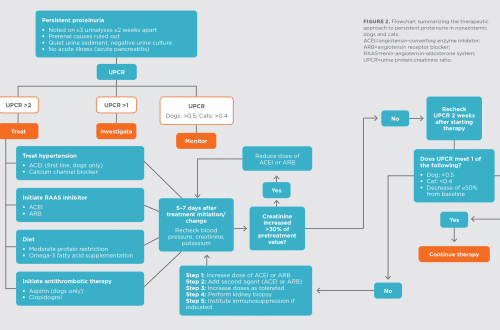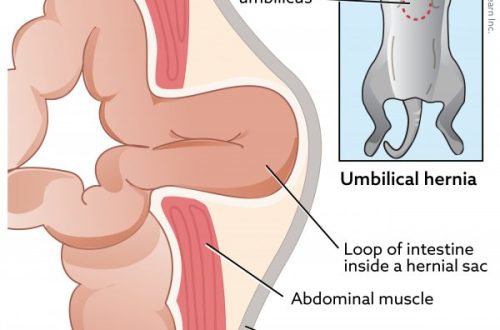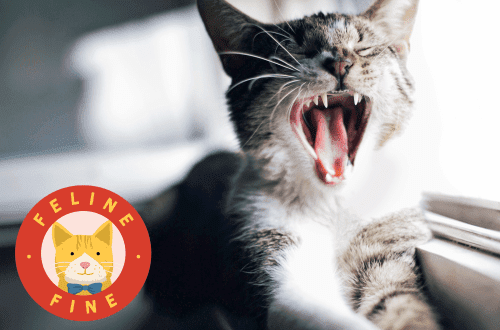
endometritis in cats
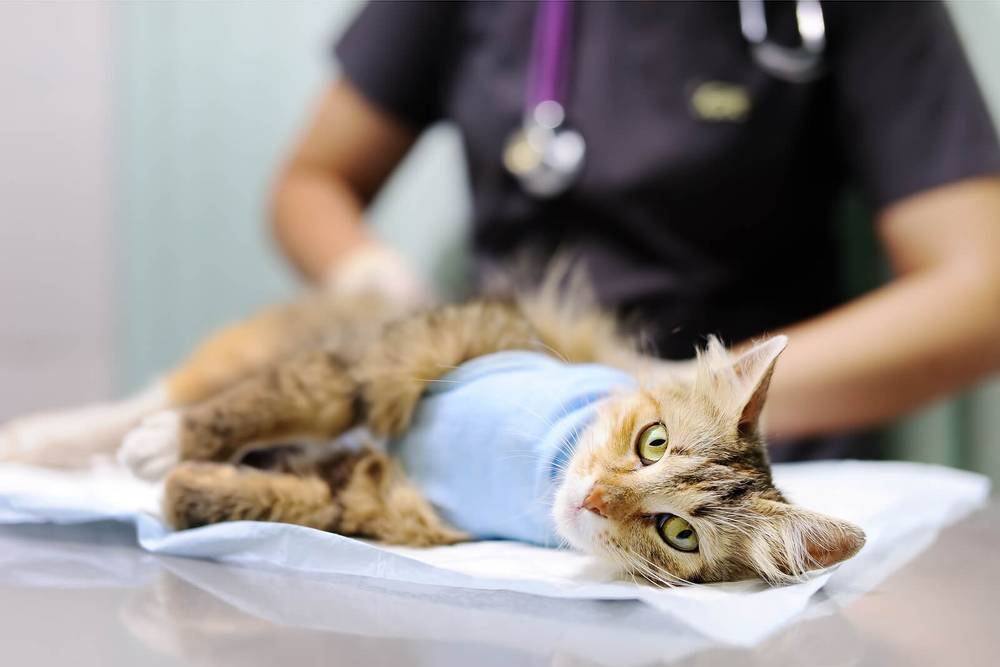
The penetration of pathogenic microorganisms into the uterine cavity with subsequent infection is due to many reasons: fetal death, placental retention, difficult labor, uterine atony, a consequence of the spread of local inflammatory processes, endogenous pathways, and other methods. The disease affects primarily giving birth to adult cats: as a rule, the disease occurs in the postpartum period. But cats that have not given birth can also get sick. Older animals get sick more often than young ones. Since endometritis in cats can be accompanied by a serious condition of the pet with complications, it is worthwhile to figure out what are the symptoms of the disease and what treatment is suitable in each of the cases.
Contents
Forms of endometritis
According to the nature of the course, acute and chronic forms of the disease are distinguished. Acute endometritis is more often expressed as a postpartum complication, the chronic form has a long course with fuzzy, “floating” symptoms.
According to the nature of inflammation, there are:
- catarrhal or mucous endometritis is characterized by the localization of infection on the surface layer of the endometrium. The inflammatory process is accompanied by the release of mucous exudate. If this stage is ignored, the catarrhal form quickly turns into fibrous, and then purulent-necrotic;
- purulent endometritis in a cat deeply affects the mucous membrane of the uterus. Its difference is purulent discharge with an unpleasant odor. Due to the infection process, this form is characterized by intoxication and an increase in the pet’s body temperature;
- acute fibrinous endometritis is clinically confirmed by inflammation of the uterine mucosa, which occurs with the release of fibrin-rich exudate dissolved in blood plasma;
- necrotic metritis occurs 2-5 days after birth. A feature is the defeat of the deep tissues of the uterus, in which necrotic areas appear;
- gangrenous septic metritis severe acute inflammation of the uterus after childbirth. There is an increase in overall body temperature, increased heart rate and respiration, lack of appetite, weakness and apathy of the pet. In addition, there is a cessation of milk secretion, the pet’s condition is extremely difficult. Sepsis develops when an infection enters the bloodstream.
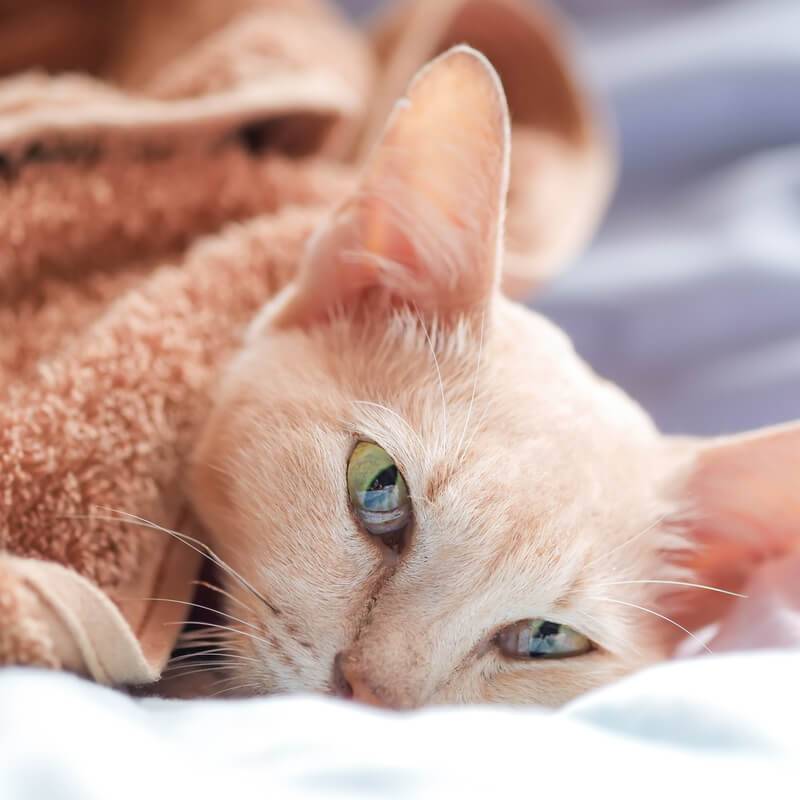
Causes of the disease
The underlying cause that provokes endometritis is a viral-bacterial infection that triggers inflammatory processes with total intoxication of the cat’s body.
Other factors affecting the disease:
- injuries of the reproductive system and uterus, received by a cat during childbirth, problems with the separation of the placenta (placenta);
- acute and chronic diseases of internal organs of infectious and parasitic etiology;
- hormonal failure of the body during childbirth and the onset of lactation.
Veterinarians also note the factors contributing to the development of endometritis: the lack of important biological elements in the cat’s diet during the period of bearing kittens, the so-called “mineral starvation”, lack of essential vitamins, insufficient physical activity during pregnancy.
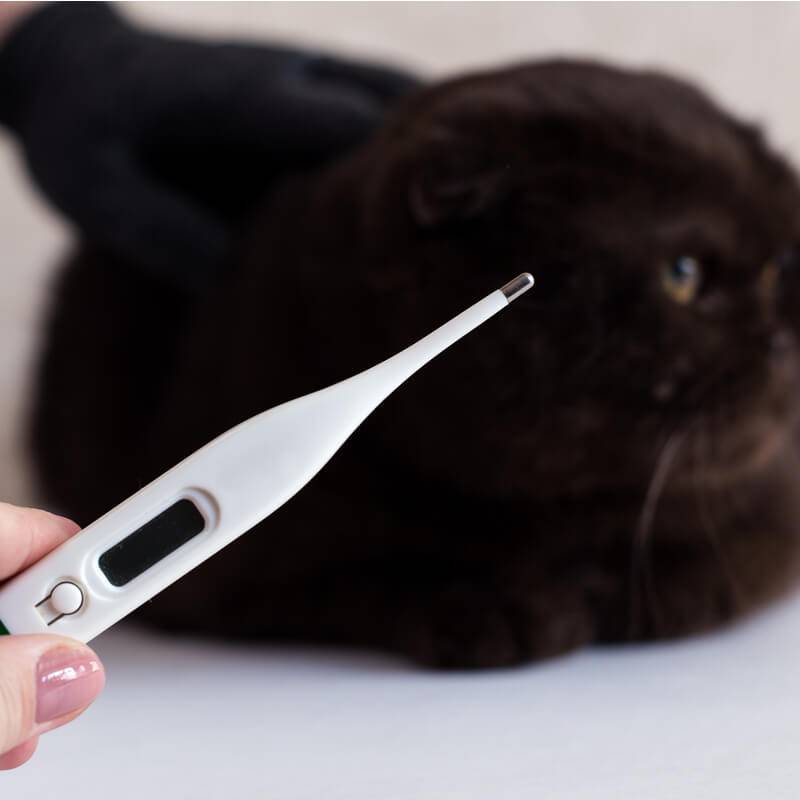
Hormonal imbalance
Hormonal imbalance in cats is a common factor in endometritis. At risk are often giving birth cats. Hormonal problems provoke diseases, such as mastitis carried by a pet. Frequent childbirth and diseases of the nervous system are also the cause of imbalance. Improper nutrition, overeating, low activity affect the endocrine system, the result of which may be, in particular, overweight or, conversely, weight loss.
Postpartum complications
Due to complicated childbirth, endometritis may develop. It provokes insufficient tone of the uterus. The reasons are different: trauma to the walls of the vagina and uterus at the time of childbirth, delayed placenta, in case of stillbirth or death of the fetus in the womb of the mother cat. During the feeding period after an easy birth, even in cats with good immunity, resistance to pathogenic bacteria and microbes decreases. The owner must understand that endometritis in a cat in the postpartum phase can go into a necrotic phase and become deadly. Therefore, it is important to pay attention to the slightest changes in the condition of the cat, especially if the birth was not easy.

General weakness of the body
The immunological reaction occupies one of the key places in the factors provoking the development of endometritis in a cat. Any weakened body is susceptible to infections and is not ready to resist. Not only viruses weaken the body, low mobility, an unbalanced diet, feeding “from the table”, overweight, and improper conditions for keeping cats contribute to a decrease in immunity. The risk group is made up of pets leading a street lifestyle, with heredity complicated by various diseases, and older cats.
Symptoms of endometritis in cats
Endometritis in a cat has symptoms depending on the infection from mild to acute and hyperacute. You should contact your veterinarian if you experience:
- cloudy discharge from the vagina with a putrid, pungent odor,
- pain on palpation of the abdominal cavity,
- clamped posture, characteristic of urination,
- fever,
- thirst
- loss of appetite,
- apathy, general depression.
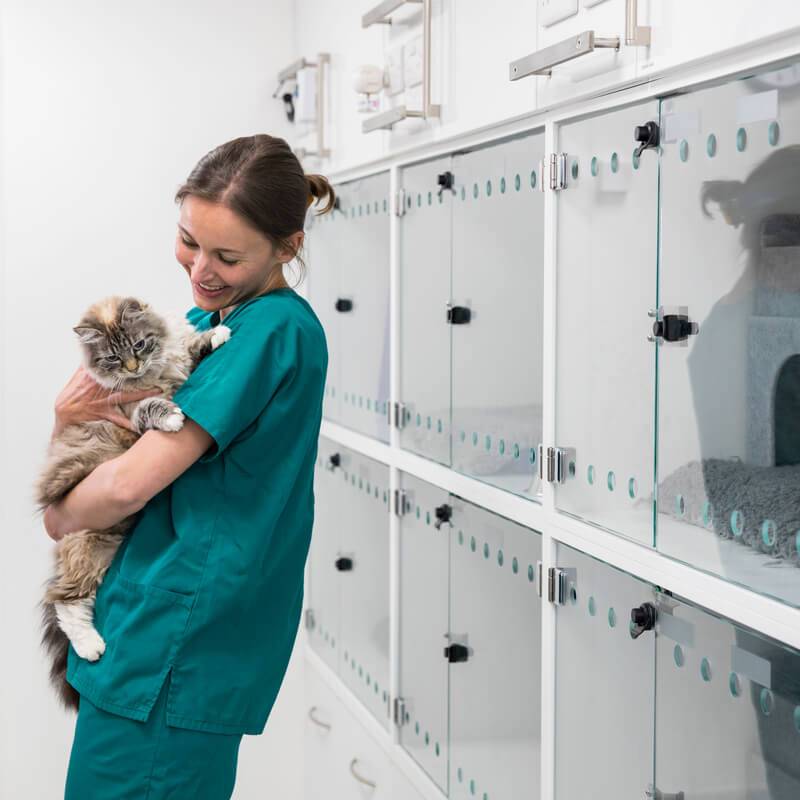
If the cat has recently given birth and is breastfeeding, symptoms such as reduced milk production or refusal to feed the kittens indicate to the owner that a veterinarian should be consulted.
In the initial phase, endometritis may not be felt due to its small localization. At this phase, it does not lead to the destruction of tissues and intoxication of the body, metabolic processes are preserved. But in the absence of veterinary care, the risk of complications that can be fatal for a cat increases.
Acute endometritis
The acute course of the disease includes endometritis and metritis complicated by infection in cats that have just given birth. As the name implies, they are transient, and therefore should be especially monitored for symptoms.
The manifestation of the disease begins on the 2-5th day after birth. There is a slight fever, a sharp decrease in appetite, a decrease or loss of milk. Mucopurulent exudate is secreted from the vagina, often with an admixture of blood. These secretions are noticeable in the morning at the cat’s resting place. Soreness is established by palpation of the abdominal cavity. Frequent posture for urination is a noticeable symptom, the cat arches its back, meows plaintively. sepsis develops.
Without urgent intervention, on average in a week, this disease ends in the death of a pet from sepsis.

Chronic endometritis
The chronic form of endometritis in a cat has symptoms that differ from the acute form by a lethargic course and less obvious clinical manifestations. For example, with a chronic course, there is less discharge from the vagina of a sick cat. The form is diagnosed by symmetrical hair loss in the region of the tail, hips and lower abdomen, resulting from hormonal disorders. The chronic form can last more than a month. With the development of the disease and a decrease in immunity, the state may transition into an acute and even purulent phase, which is dangerous for the pet.
Diagnostics
For the diagnosis are assigned:
- general clinical blood test,
- blood chemistry,
- general urine analysis.
During the clinical examination, the veterinarian takes a smear from the uterus in order to identify the causative agent of the inflammatory process. Bacterial culture on nutrient media is necessary to determine the infection.

Some pet conditions require additional research — X-ray examination and ultrasound diagnostics. This is important for understanding the state of the uterus and internal organs, the presence of pathological inclusions in it.
Once the diagnosis is confirmed, the veterinarian develops an individual treatment regimen.
Treatment of endometritis in cats
Therapy is selected depending on the results of the studies, the stage of endometritis and the clinical condition.
Antimicrobial therapy consists in prescribing broad-spectrum antibiotics.
In more acute phases, the treatment of endometritis in a cat consists in removing purulent exudate from the uterine cavity and stopping inflammation. The cat needs to ensure complete rest, give a complete food with vitamin complexes.
Symptomatic therapy eliminates the signs of intoxication that occur with endometritis. For this purpose, to restore the disturbed water and electrolyte balance, intravenous droppers of glucose and Ringer-Locke solutions are prescribed.

To increase the body’s resistance, immunomodulators are needed, the course of which should be at least two weeks.
In the absence of an adequate response of the body to conservative therapy, the doctor decides on surgical intervention.
In the advanced or acute course of the disease, it is most often necessary to remove the uterus.
The success of treatment depends on a number of factors, among which the age of the cat, the presence of chronic diseases of the internal organs and the cardiovascular system, liver and kidneys are of no small importance.
Possible complications
With the progression of the disease, the infection spreads into the fallopian tubes, penetrates into the deep layers of the uterus, triggering irreversible processes.
Complications with advanced endometritis can be infertility, sepsis, or even the death of a pet.
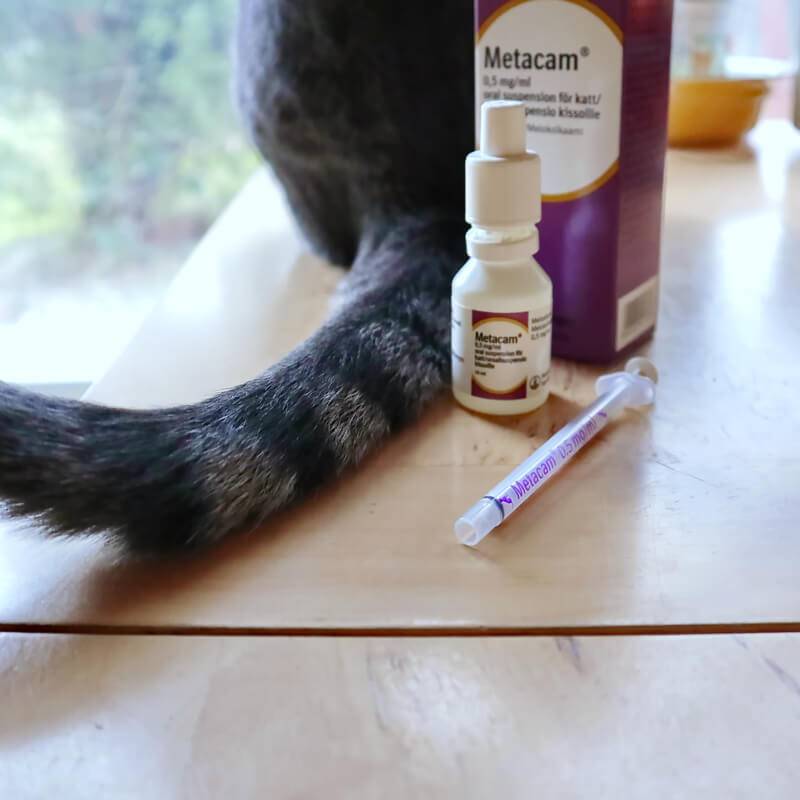
Pyometra — purulent inflammation of the uterus, when inflammation from the endometrium passes to the muscular layer of the reproductive organ. This pathology is life-threatening for the pet and requires emergency surgical intervention.
Sepsis, or blood poisoning, can be a complication of endometritis. The infection spreads from the uterus throughout the body and, if not urgently treated, can cause the death of a pet.
Peritonitis — acute inflammation of the serous membrane, which can develop against the background of endometritis. This is a serious complication that requires urgent treatment of endometritis in a cat, since there is a threat to life.
disease prevention
Prevention consists in minimizing the causes that provoke the development of the inflammatory process. Endometritis in a cat can be prevented by following simple recommendations from veterinarians.
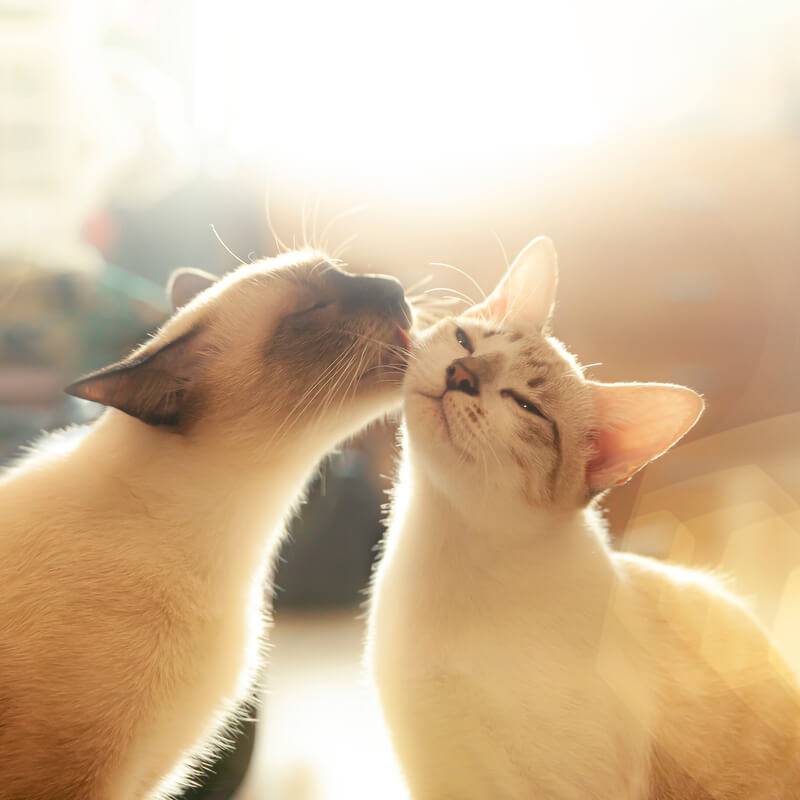
- Timely vaccination and antiparasitic treatments will save the cat from possible infections that have a direct effect on the reproductive organs and can contribute to endometritis.
- When breeding, it is necessary to take into account the clinical condition of the cat when planning offspring. Frequent mating can lead to unpredictable complications and pet illness; the risk of losing both the cat and the offspring is great.
- Veterinarians do not recommend the use of hormonal contraceptives, as they can provoke not only endometrial diseases, but also cancer. Contraceptives should be used with great caution, preferably after consulting with a veterinarian.
- A balanced diet is essential for the health of cats. But it is especially important to adhere to full feeding during the period of gestation and lactation.
- If the owner does not plan breeding activities, then in order to exclude endometritis in a cat, it is recommended to sterilize it.
The article is not a call to action!
For a more detailed study of the problem, we recommend contacting a specialist.
Ask the vet
July 8 2020
Updated: 21 May 2022



